
How to Troubleshoot Solar Panels?
Problems with Solar Panels
A common issue reported with solar panels is their under-production of power. Other reported issues are delamination and "snail trails" on the panels. Physical damage to the solar panels can also be an issue that could affect the functionality of the solar panels depending on the severity of the damage. You can check the status of your solar panels by testing their performance.
How to Test a Solar Panel
Tools & Resources Required
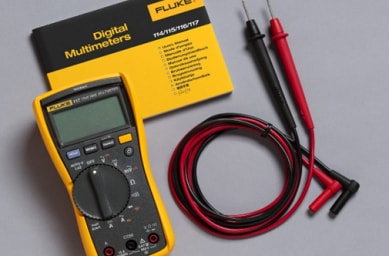
Multimeter

Specifications Sheet
You can obtain specifications sheets of a solar panel through the methods below:
- For Renogy solar panels, please refer to the product listing page.
- For other brands, please ask the manufacturer for the solar panel spec sheet.
How to Test a Solar Panel in a Single Solar Panel Array?
Step 1. Check the Test Environment
The troubleshooting steps must be performed under the following conditions:
- Performed on a sunny day. (No clouds, trees, or anything over the solar panel)
- At noon or when sunlight is most available.
- Solar panel facing the right orientation. (In the northern hemisphere, solar panels should face true south. In the southern hemisphere, solar panels should face true north.)
- Tilting the solar panel at a 30° angle.
If troubleshooting is not conducted under these conditions, the test results will NOT be valid.
Step 2. Test Open-circuit Voltage (VOC)
Step 2.1 On a multimeter
- Insert the negative (black) testing lead into the "COM" port.
- Insert the positive (red) testing lead into the 'Volt' port labeled "V".
- Turn the dial to VDC or 200VDC
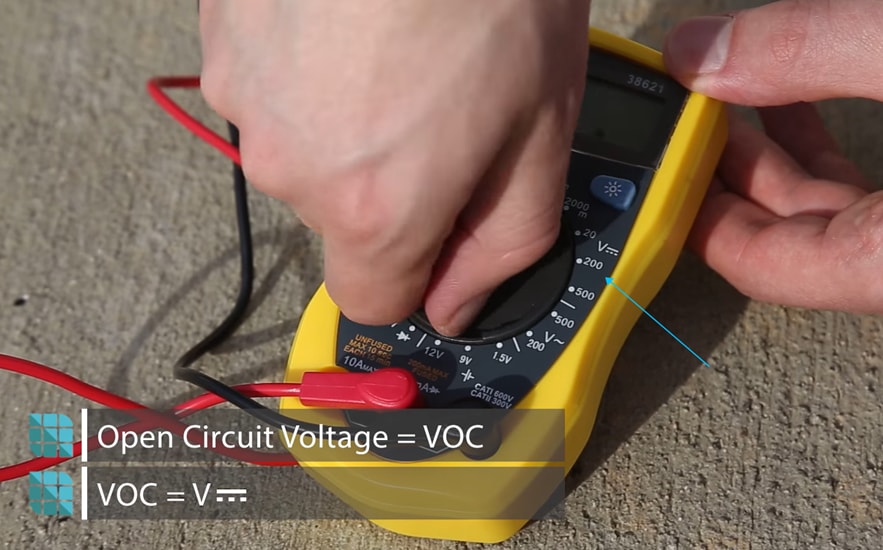 |
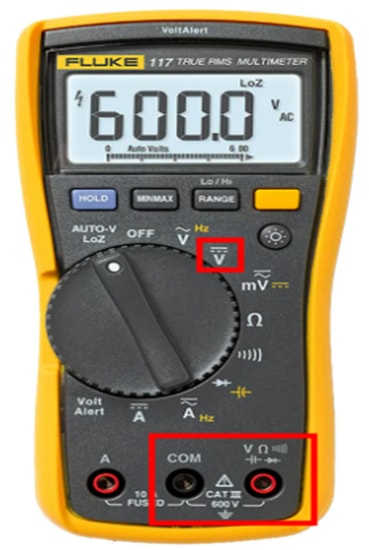 |
Step 2.3 Insert the negative lead into the negative MC4 connector.
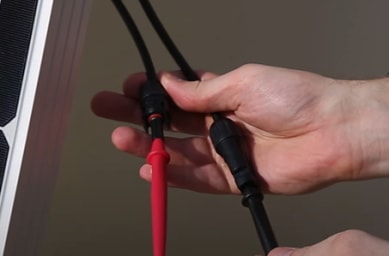
Step 2.4 Take a picture of the value of the voltage on the screen.
Step 3. Test Short-circuit Current (ISC)
Step 3.1 On a multimeter
- Insert the negative (black) testing lead into the 'COM' port.
- Insert the positive (red) testing lead into the AMP port labeled with an “A”.
- Turn the dial to ADC.
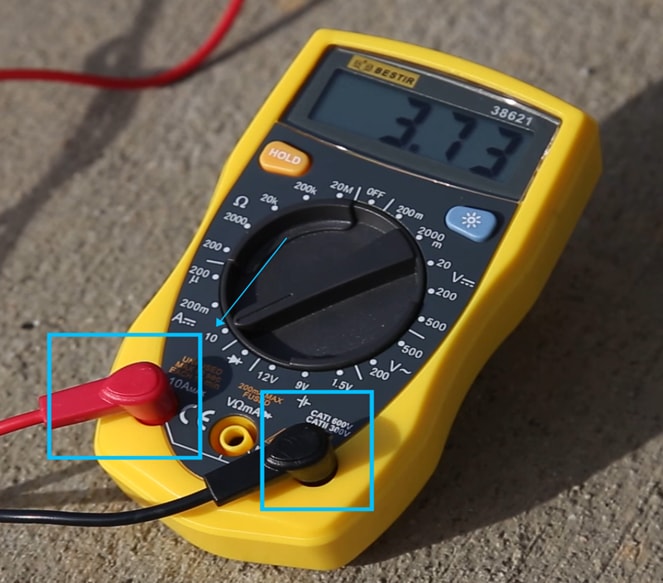 |
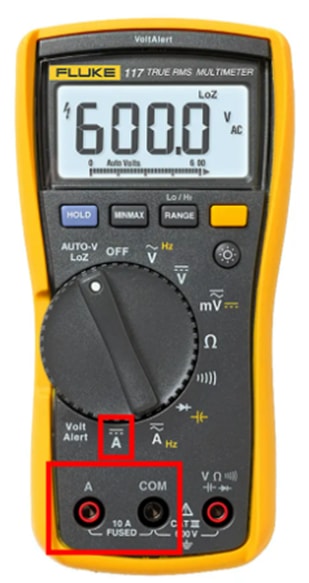 |
Step 3.3 Insert the negative lead into the negative MC4 connector.

Step 3.4 Take a picture of the value of current on the screen.
Step 4. Comparing the Test Results to the Specification Sheet
- Open-circuit Voltage (VOC) results should be in a ±10% range of the listed value in the specification sheet.
- Short-circuit Current (Isc) results should be at 50% of the listed value in the specification sheet or higher.
Example:
RNG-100D-SS Specification: 100 Watt 12 Volt Monocrystalline Solar Panel (Compact Design) | Renogy
- Open-Circuit Voltage (Voc): 24.3V ±10%=±24.3×0.1
- Short-Circuit Current (Isc): 5.21A 50%=2.6
Test Result:
- Open-Circuit Voltage (Voc): Should be 21.87V~26.73
- Short-Circuit Current (Isc): Should be 2.6A or higher
How to test a Solar Panel on a Multiple Solar Panel Array?
Step 1. Disconnect All Solar Panels
Step 2. Follow the steps listed for testing the single solar panel on each panel.
For details, refer to the video below:













